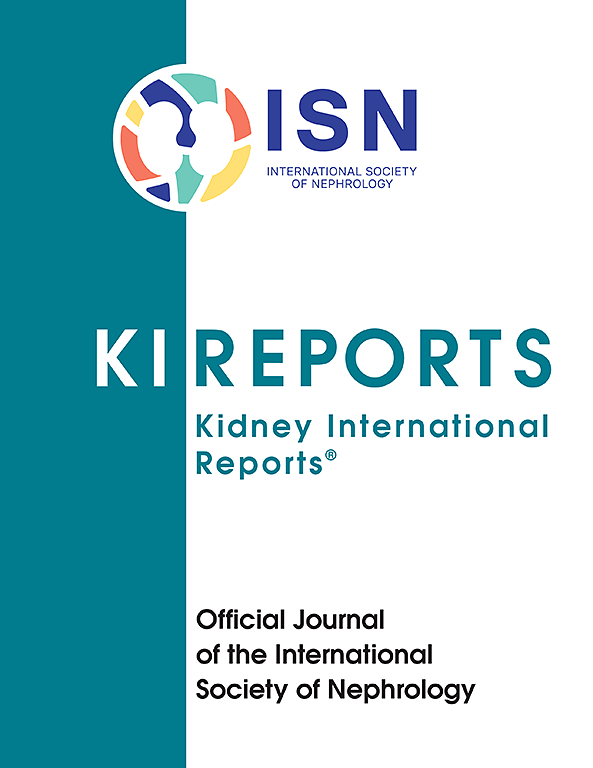肾移植受者肺动脉高压与预后的关系
IF 5.7
2区 医学
Q1 UROLOGY & NEPHROLOGY
引用次数: 0
摘要
众所周知,肾衰竭患者的肺动脉高压(PHTN)与发病率和死亡率增加有关。尽管如此,关于肾移植(KTx)后其临床影响的大型队列数据相对缺乏。因此,本研究试图在迄今为止最大的肾移植队列之一中直接评估移植前PHTN的预后意义。方法:本回顾性观察队列分析回顾了2011年1月1日至2021年9月30日期间美国三个三级移植中心的所有连续肾移植受者。经胸超声心动图(TTE)将移植前PHTN定义为右心室收缩压(RVSP)≥35 mm Hg。比较移植前PHTN患者和未移植前PHTN患者的临床结果,包括死亡率和同种异体移植失败(总体和死亡率审查)。结果共纳入KTx患者5322例;平均年龄55.2±13.7岁,男性58.8%。其中1726例(32.4%)有移植前PHTN。PHTN与显著较差的预后独立相关:死亡率(校正风险比[aHR]: 1.24, 95%可信区间[CI]: 1.06-1.45, P = 0.007),整体同种异体移植失败(aHR: 1.24, 95% CI: 1.09-1.42, P = 0.002),以及死亡审查的同种异体移植损失(aHR: 1.25, 95% CI: 1.01-1.56, P = 0.044)。随着肺压力的增加,死亡率和同种异体移植失败的风险也逐渐增加。结论超声心动图RVSP分类的移植前PHTN与ktx后死亡率和同种异体移植失败风险增加独立且递增相关。在移植前的工作中,这可能允许识别高风险人群,这些人群可以从移植后的进一步评估、早期干预和更密切的监测中受益。本文章由计算机程序翻译,如有差异,请以英文原文为准。

Association of Pulmonary Hypertension With Outcomes in Kidney Transplant Recipients
Introduction
Pulmonary hypertension (PHTN) in patients with kidney failure is known to be associated with increased morbidity and mortality. Despite this, there is a relative paucity of large cohort data regarding its clinical impact following kidney transplantation (KTx). Therefore, this study sought to directly evaluate the prognostic implications of pretransplant PHTN in one of the largest kidney transplant cohorts to date.
Methods
This retrospective observational cohort analysis reviewed all consecutive kidney transplant recipients at three tertiary transplant centers in the United States between January 1, 2011 and September 30, 2021. Pretransplant PHTN was defined as right ventricular systolic pressure (RVSP) ≥ 35 mm Hg on transthoracic echocardiography (TTE). Clinical outcomes were compared between patients with and without pretransplant PHTN, including mortality and allograft failure (overall and censored by mortality).
Results
A total of 5322 KTx recipients were included; mean age 55.2 ± 13.7 years, 58.8% male. Of these patients, 1726 (32.4%) had pretransplant PHTN. PHTN was independently associated with significantly poorer outcomes: mortality (adjusted hazard ratio [aHR]: 1.24, 95% confidence interval [CI]: 1.06–1.45, P = 0.007), overall allograft failure (aHR 1.24, 95% CI: 1.09–1.42, P = 0.002), and death-censored allograft loss (aHR: 1.25, 95% CI: 1.01–1.56, P = 0.044). Risk of mortality and overall allograft failure also appeared to be incrementally higher with increasing pulmonary pressures.
Conclusion
Pretransplant PHTN classified by echocardiographic RVSP was independently and incrementally associated with an increased risk of mortality and allograft failure post-KTx. In pretransplant work up, this may allow for identification of a high-risk cohort that could benefit from further evaluation, early intervention, and closer surveillance in the posttransplant period.
求助全文
通过发布文献求助,成功后即可免费获取论文全文。
去求助
来源期刊

Kidney International Reports
Medicine-Nephrology
CiteScore
7.70
自引率
3.30%
发文量
1578
审稿时长
8 weeks
期刊介绍:
Kidney International Reports, an official journal of the International Society of Nephrology, is a peer-reviewed, open access journal devoted to the publication of leading research and developments related to kidney disease. With the primary aim of contributing to improved care of patients with kidney disease, the journal will publish original clinical and select translational articles and educational content related to the pathogenesis, evaluation and management of acute and chronic kidney disease, end stage renal disease (including transplantation), acid-base, fluid and electrolyte disturbances and hypertension. Of particular interest are submissions related to clinical trials, epidemiology, systematic reviews (including meta-analyses) and outcomes research. The journal will also provide a platform for wider dissemination of national and regional guidelines as well as consensus meeting reports.
 求助内容:
求助内容: 应助结果提醒方式:
应助结果提醒方式:


